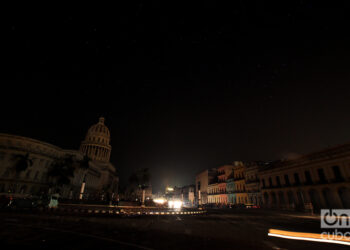Photos: Darío Leyva
Jaimanitas is a fishing village on the northeast coast of the Cuban capital where José Fuster planted his creative flag, and where, since 1975, he has gradually changed the face of the community, which cheerfully displays the esthetic hallmark of this ceramicist, painter, draftsman and sculptor.
As a little boy, Fuster (Caibarién, 1946) dreamed of changing the world (“for the better”), but when he realized that it was a dream that was “too ambitious,” he decided to give the best of himself to Jaimanitas: his art.
It all began when he placed a display/catalogue over the front gate of his house/workshop, a retrospective of pieces that are now more than 30 years old. That artwork, which classifies as patrimonial, has remained intact and the community has taken care of, respected and preserved it, “for which I am grateful,” Fuster says with feeling, adding that from then on, he decided to “expand” beyond the limits of his property.
That is how he began to change his surroundings: he changed the facades of several homes and local social institutions, decorated street corners, and built places where neighbors could get together. For example, he decided to create a park honoring Gaudí, another park called “Unicornio” that is a wink at singer-songwriter Silvio Rodríguez and that is located very close to the local maternity home (which also holds his art), and a third park dedicated to chess lovers. The latter features a ceramic chess table, bishop and knight, and also a sign that says “In chess, there is only one play: the best.”
The family doctor’s office — one of the oldest and most significant pieces of his work — is decorated with his aesthetic, as is the “House of the Mexican,” which has a cupola topped with a rooster; the “House of Iris”; the “House of Princess Diana,” which looks like a little castle; the “House of María Bonita,” which brings to mind Augustín Lara and María Félix”; the “House of Teté,” and a house devoted to the memory of the Spanish poet and revolutionary Miguel Hernández.
“Nothing has been imposed or ordered or forced,” he says, adding that so far, “50 houses have been worked on, within approximately 4,000 meters.”
As if that were not enough, the artist also wants Jaimanitas to have “the largest mural in the world.” In fact, one is now located on 226 and Tercera streets, a project that began during the 8th Havana Biennial. It is about 60 meters long, but it “will continue” because “it will grow over the years, given that it is permanently open to contributions, a perpetual invitation to Cuban and international artists to leave their work and their signatures.” The mural, which has weathered rainstorms and sunshine, can be accessed and enjoyed freely, without having to ask permission from anyone. Its beauties include the work of several National Art Award winners, other well-known Cuban painters and young artists who some day could be famous figures in the world of visual arts.
The work of prestigious Cuban artist like Nelson Domínguez, Eduardo Roca Salazar (Choco), Alexis Leiva (Kcho), Roberto Fabelo, Oscar Rodríguez de la Serie, Zaida del Río and Flora Fong is displayed along with that of artists from Chile, the United States, Spain, Canada, Italy, Belgium and Japan. “That mural can continue to be enriched to unimagined limits,” Fuster says proudly. What is most important is “the dialogue, the exchange it generates,” and one of the aspects that most interests him is that children should have access to culture. “If their parents do not take them to the Museo Nacional de Bellas Artes (National Museum of Fine Arts), they can enjoy the work of outstanding contemporary artists in their own community; the art is there, within reach, and that is what is most gratifying.”
Some months ago, a high-ranking city official from Dallas, Texas, visited Jaimanitas and proposed that Fuster do something similar there, he said. However, “I could not comply with that request because I would have to abandon my project here,” Fuster said. “But I suggested to him that he send a group of artists here, so that they can add something to the mural. People appreciate a humane, beautiful gesture like that.”
Fuster, who is considered to be a founder of the so-called New Ceramics Movement in Cuba, along with artists such as Alfredo Sosabravo, Julia González and Reynaldo Calvo, has created exclusive pieces for his studio/workshop. For example, a column that calls to mind Sandro Botticelli, a “Venus’s Birth” in which a woman is depicted in a bathing suit coming out of a rooster, a frank parody of machismo, and another that is a tribute to happiness, love and music. His most recent mural, which was inaugurated on Sept. 8, is dedicated to the Virgin of La Caridad del Cobre, Cuba’s patron saint. “It is a private piece, but also public, because whoever wants to see it can visit my house/workshop.”
The financial sustenance for this artistic/transformational project is provided by Fuster. “I invest a large part of what I earn in Jaimanitas, which is a pleasure for me. I feel like just another member of the community who is trying to contribute a little bit of love. The people who live in these houses are doctors, architects, engineers, builders…people like me. I invest without either me or them realizing it.”
The urban development intervention that Fuster has carried out just 15 kilometers from the Cuban capital classifies as a monumental sculpture complex, and can be visited any day at any time. There, roosters, dogs, horses, cats, birds, fish, mermaids, suns, moons, crocodiles and flowers will welcome you, because Fuster’s home, which is Jaimanitas, is always open.




-60-x-50-cm-Impresión-lightjet-sobre-KODAK-Endura-papel-fotográfico_0-120x86.jpg)





